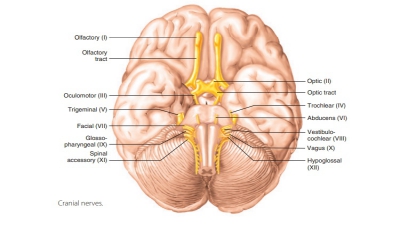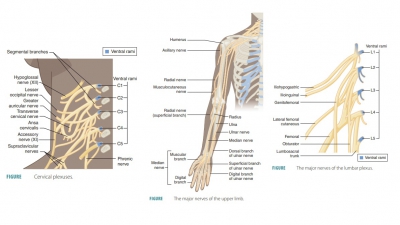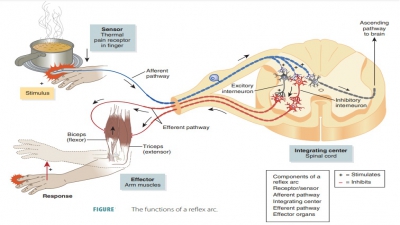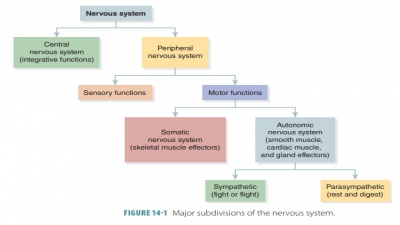Peripheral Motor Endings
| Home | | Anatomy and Physiology | | Anatomy and Physiology Health Education (APHE) |Chapter: Anatomy and Physiology for Health Professionals: Peripheral Nervous System and Reflex Activity
In the PNS, motor endings activate effectors via the release of neurotransmitters.
Peripheral
Motor Endings
In the PNS, motor endings activate
effectors via the release of neurotransmitters. Peripheral motor end-ings
connect nerves to their effectors. They are related to the innervation of
skeletal muscle as well as the innervation of visceral muscles and various
glands.
Skeletal Muscle Innervation
Terminals of somatic motor fibers
innervating voluntary muscles form complex neuromuscular
junctions with their effector cells. The ending of each axon branch, at its
target muscle fiber, splits into a cluster of axon terminals, branching over the sarcolemma folds of the fiber.
These axon terminals contain mitochondria and synaptic vesi-cles that are
filled with acetylcholine (ACh).
As a nerve impulse reaches the
axon terminal, ACh is released via exocytosis, diffusing across the synaptic
cleft. It attaches to its receptors on the sarco-lemma and the neuromuscular
junction. Ligand-gated channels are opened by this ACh binding, allowing sodium
and potassium ions to pass. Because sodium enters cells more quickly than
potassium is lost, the muscle cell interior becomes depolarized. This graded
potential, known as the end plate
potential, spreads to nearby areas of the membrane, causing voltage-gated
sodium channels to open. An action potential results along the sarcolemma,
stimulating contraction of the muscle fiber. At somatic neuromuscular
junctions, the synaptic cleft is filled with a basal lamina that is rich in
glycoproteins. This basal lamina is not present at other synapses. It contains
acetylcholinesterase, which breaks down the ACh.
Visceral Muscle and Gland Innervation
Junctions between autonomic motor
endings and their effectors are not as complex as those formed between somatic
fibers and skeletal muscle cells. There is repeated branching of autonomic
motor axons. Each of these forms synapses
en passant (which means “synapses in passing”) with its effec-tor’s cells.
An axon serving a smooth muscle or gland has many varicosities, whereas an axon serving a cardiac muscle does not. Varicosities are
knob-like swellings that contain mitochondria and synaptic vesicles, resembling
a string of pearls. Autonomic synaptic vesicles usually contain ACh or
norepi-nephrine (NE). Both act indirectly on their targets, using second
messengers. As a result, visceral motor responds are slower than those caused
by somatic motor fibers, which cause direct opening of ion channels.
1. Explain
the actions of motor endings.
2. Define
the term “neuromuscular junction” and the relationship to axon terminals and
the end plate potential.
3. Define
the term “varicosities.”
Related Topics




